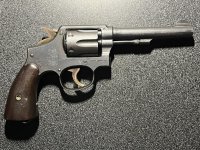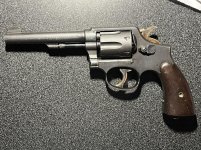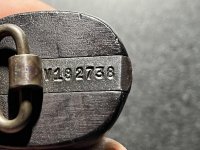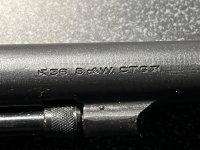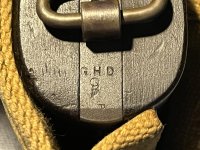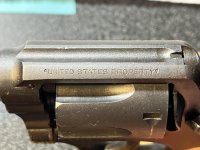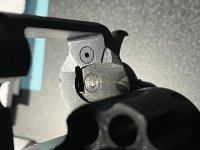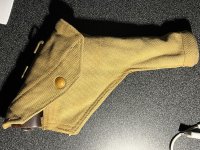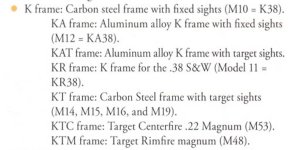CapeFearElvis
Member
- Joined
- Mar 9, 2023
- Messages
- 27
- Reaction score
- 37
Hey all,
I've been going over this new addition to the collection and I'm curious if I've properly ID'd this pistol. I'm primarily seeking more information on the year of production, but all comments and information are welcomed.
Particulars:
Hand Ejector, Model K38
5" barrel
Serial: V182738 (mfg. 1942-1944??)
Frame: 5-screw with Butt Swivel
Sights: Fixed front and rear sights
Strain Screw: Yes, on front strap
Latest patent date: December 2X, 1914
Though this pistol hasn't been taken care of the best, it appears unfired to me. Why? There is no imprinting or wear on the breech face around the firing pin hole where the cartridge head would rest during firing.
The gun also has a parkerizing type finish on it that's consistent with military-issued small arms and came with a military-style canvas holster.
A few photos are shown below.
Thank you!
I've been going over this new addition to the collection and I'm curious if I've properly ID'd this pistol. I'm primarily seeking more information on the year of production, but all comments and information are welcomed.
Particulars:
Hand Ejector, Model K38
5" barrel
Serial: V182738 (mfg. 1942-1944??)
Frame: 5-screw with Butt Swivel
Sights: Fixed front and rear sights
Strain Screw: Yes, on front strap
Latest patent date: December 2X, 1914
Though this pistol hasn't been taken care of the best, it appears unfired to me. Why? There is no imprinting or wear on the breech face around the firing pin hole where the cartridge head would rest during firing.
The gun also has a parkerizing type finish on it that's consistent with military-issued small arms and came with a military-style canvas holster.
A few photos are shown below.
Thank you!
Attachments
Last edited by a moderator:

